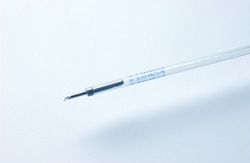Our broad portfolio includes the full line of disposable and surgical devices for handling prostate disorders, from diagnosis (biopsy with needles and biopsy guns) to treatment (prostatic catheters, bladder evacuator Easivac, post operative bags). Our solutions come in a variety of materials to address even the most specific requirements. The latest Hydro X-Flow Prostatic Catheter is a good example of how Porgès Coloplast applies innovation to meet medical needs, with a hydro coating on a silicone body delivering outstanding ease of use.
Single-use devices
Our range of single-use devices – specifically designed and manufactured for managing bladder drainage – answers all your voiding dysfunction management needs. With indwelling times of up to 12 weeks, our line of Foley in-dwelling catheters is specially adapted to treat bladder drainage problems. To meet a range of budgetary needs, the Foley range is available in a variety of materials, from our ‘Folysil all silicone’ gold standard to our more economical latex line, ‘Folatex’.
Porgès Coloplast solutions for the lower urinary tract also address supra pubic drainage management via products such as our ‘Cystodrain Integral’, with an integrated balloon catheter for easy insertion and removal.

Treating bladder dysfunction
Bladder dysfunctions such as overactive bladder (OAB) can be treated using BoNee, our dedicated bladder injection needles developed in partnership with physicians to deliver low viscosity medications precisely where intended in the bladder wall.
 Bladder outflow obstruction, urethral stricture, and other urological conditions can also be treated with Porgès Coloplast products.
Bladder outflow obstruction, urethral stricture, and other urological conditions can also be treated with Porgès Coloplast products.
All our devices are developed to be easily applied and removed, offering safe and intuitive handling and great-fitting performance.